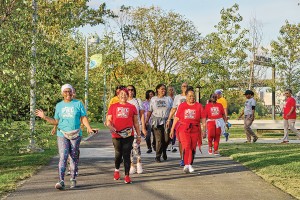How to Find Your Best Running Stride, According to Science
Finding your running stride can be kind of an awkward process — especially if it doesn’t feel natural. But it turns out you might not actually need to go through a bunch of trouble and awkward workouts find your best running stride after all. A recent study found that messing with your natural running form probably won’t improve your performance and will likely make running harder. Pass.
As per the New York Times, a study out of Bringham Young University in Utah, published in the International Journal of Exercise Science, examined the running strides of both skilled and novice runners and the effects when a change of stride was implemented. To begin the examination, researchers had each of the 33 volunteers (19 skilled, 14 novice) run at the most comfortably fast pace they could maintain for 20 minutes on a treadmill. From here, they counted the number of steps each runner took and were able to determine the length of each runner’s stride when running at their most comfortable speed.
Next, the researchers fitted each volunteer with a mask calculating their oxygen intake, which helped track their running economy. (That’s how they measure physical demand — movements requiring less oxygen are more economical.) The researchers then — sort of sneakily — started altering the runners’ strides by asking them to match their footfalls with the sound of a metronome. The speed of the treadmill remained the same but the beat of the sound changed, causing the runners to shorten or lengthen their stride to keep their pace with the metronome. The oxygen mask data was then examined to see if and how each runner’s running economy had changed.
The data showed that when the runners were forced to change their stride, their running economy declined — meaning that running became more difficult and less efficient when their natural stride was altered. Interestingly, these findings held true for both the experienced and novice runners. While this was a small study, this information suggests our bodies may instinctively know what our natural and most efficient stride is.
The takeaway? When it comes to your running form, you probably don’t need to worry about how you look or how you “should” look — just do what feels right for you, my friends! If science is on point, you already know your best stride is.
Like what you’re reading? Stay in touch with Be Well Philly—here’s how:
- Like Be Well Philly on Facebook
- Follow Be Well Philly on Twitter
- Follow Be Well Philly on Instagram
- Follow Be Well Philly on Pinterest
- Get the Be Well Philly Newsletter



